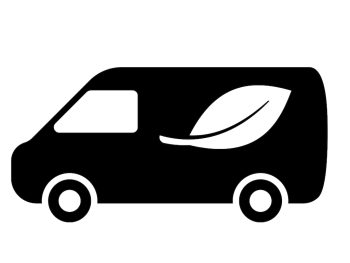New guidance outlining the scope, reporting and exemption of the government fleet commitment is now out from the Department for Transport (DfT).

First announced in 2017 and later expanded, the fleet commitment states that 100% of the central government car and van fleet will be fully zero emission by 2027.
The commitment applies to all central government departments and their arm’s length bodies (ALBs), and the new guidance sets out latest measures on scope, exemptions and additional exemptions.
The new information confirms that ALBs within the scope of the commitment include executive agencies (EAs); non-ministerial departments (NMDs); executive non-departmental public bodies (NDPBs), plus any other non-market bodies mainly controlled and financed by one or more central government departments. These are classed as ‘reporting organisations’.
Devolved administrations, local authorities, Crown Dependencies and Overseas Territories are not within scope of the commitment.
All cars and vans owned and leased by a reporting organisation are in the scope of the government fleet commitment unless otherwise specified. This also includes car club vehicles.
Hire cars and vans are within the scope of the commitment if they are hired for five or more days. This excludes off-hire and non-chargeable days (for example, for delivery or collection).
Vans are classed category N1 vehicles with a gross weight up to and including 3,500kg for ICE vehicles, along with zero-emission vans used for the carriage of goods with a GVW of more than 3,500kg up to 4,250kg.
Fleet data must be reported quarterly to the Defra and central government departments should collect their reporting data themselves and on behalf of their ALBs unless otherwise agreed.
Exemptions include some category M1 and N1 vehicles by default and do not form part of the 100% zero-emission vehicle fleet target.
These include cars and vans part of a salary sacrifice scheme; armoured vehicles; emergency response vehicles fitted with blue warning beacons; vehicles that accrue less than two-thirds of their annual mileage in the UK (mileage accrued in the UK does not include the Overseas Territories or Crown Dependencies); and vehicles that are not used for road transport, for example, training and testing vehicles.
Hire cars and vans operated for fewer than five days are also exempt but fall within the scope of the commitment if they are hired for longer. This excludes off-hire and non-chargeable days, for example for delivery or collection.
Additional exemptions have also been outlined. These may be granted if meeting the commitment would pose a security risk. For example, vehicles that must regularly conduct covert surveillance operations may qualify for an additional exemption.
An additional exemption may also be granted if there are no zero-emission vehicle (ZEV) options that meet safety requirements or if no ZEV options are technically viable.
All additional exemptions from the government fleet commitment will be temporary unless otherwise specified.
The government fleet commitment was first announced in 2017 when the Government committed to 25% of cars in central government department fleets by 2022. The Road to zero strategy, published the following year, expanded upon the announcement and set out that 25% of the central government car fleet would consist of ultra-low emission vehicles by 2022, which became known as the government fleet commitment.
This was further expanded with the publication of the Decarbonising transport: a better, greener Britain plan in 2021, which set out the commitment that 100% of the central government car and van fleet will be fully zero emission by 2027.
Full details of fleet commitment scope, reporting, exemptions and applications are online here.

